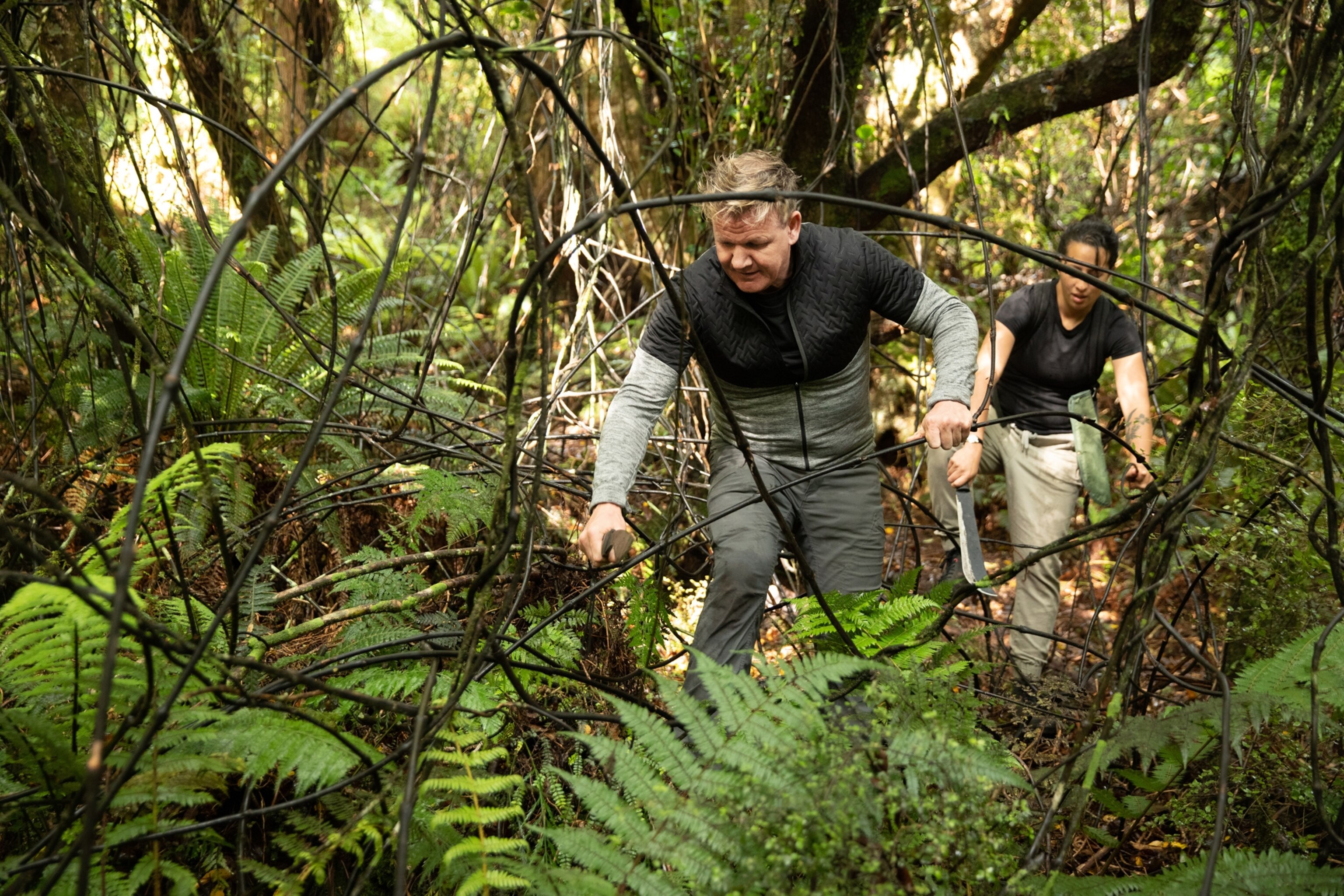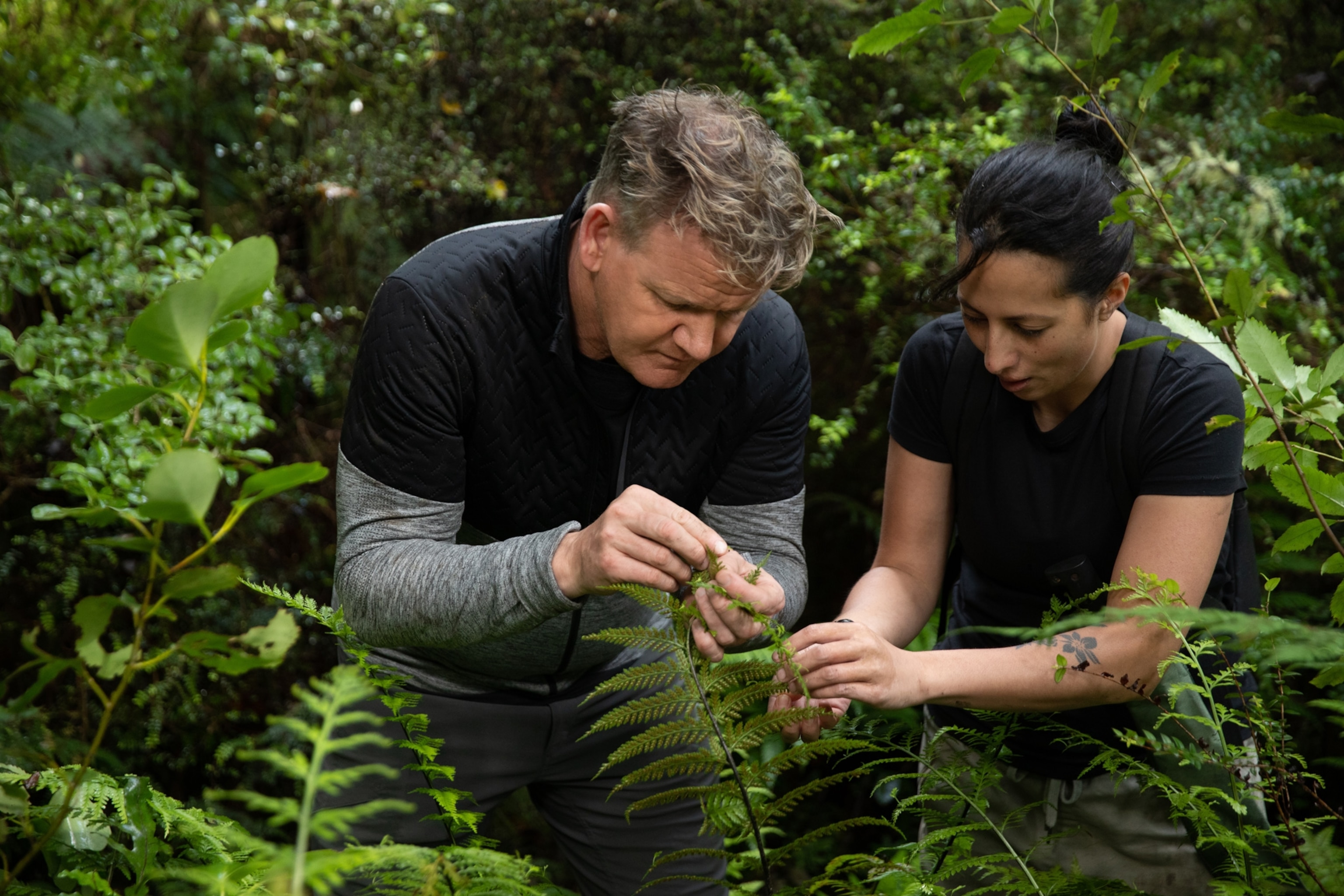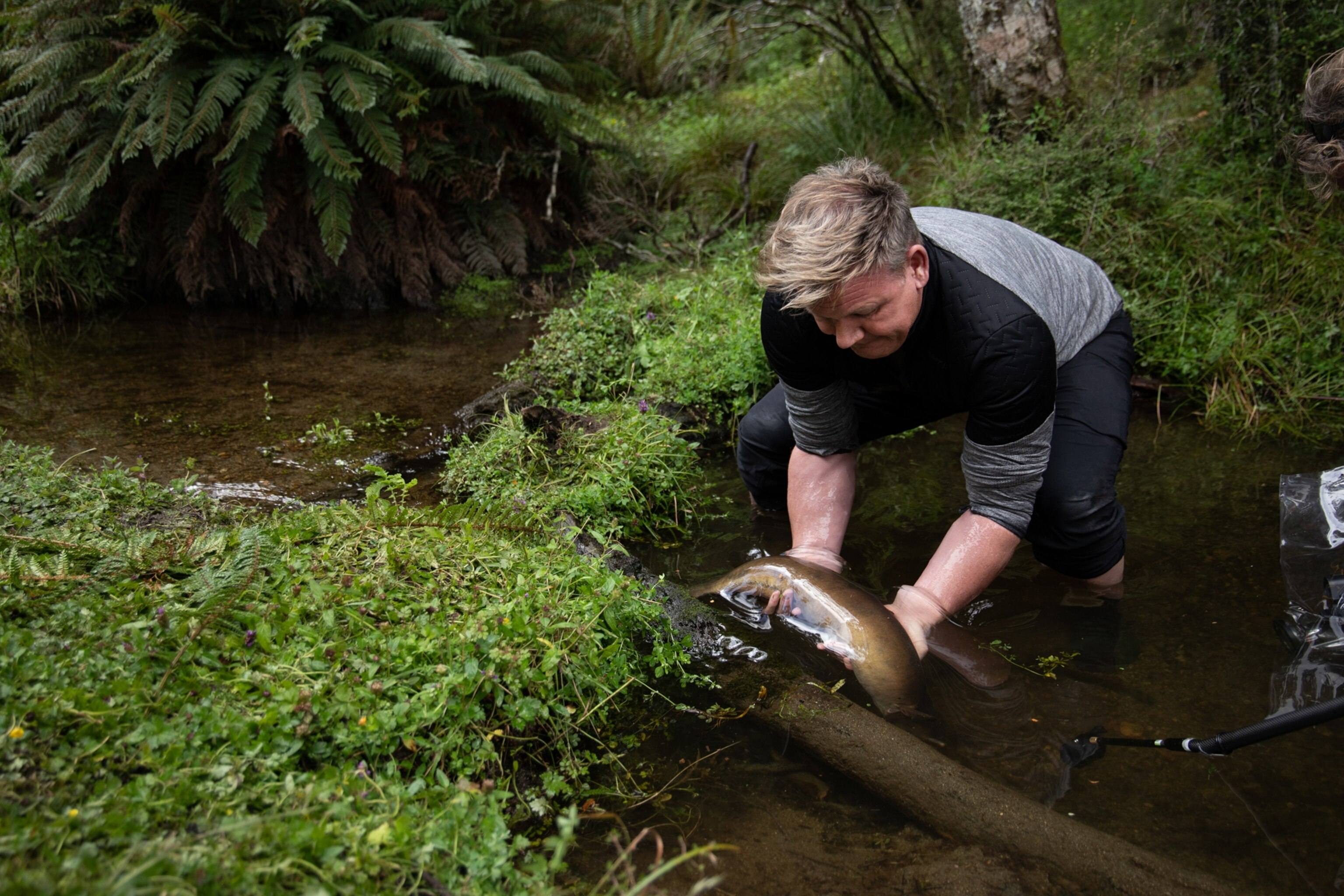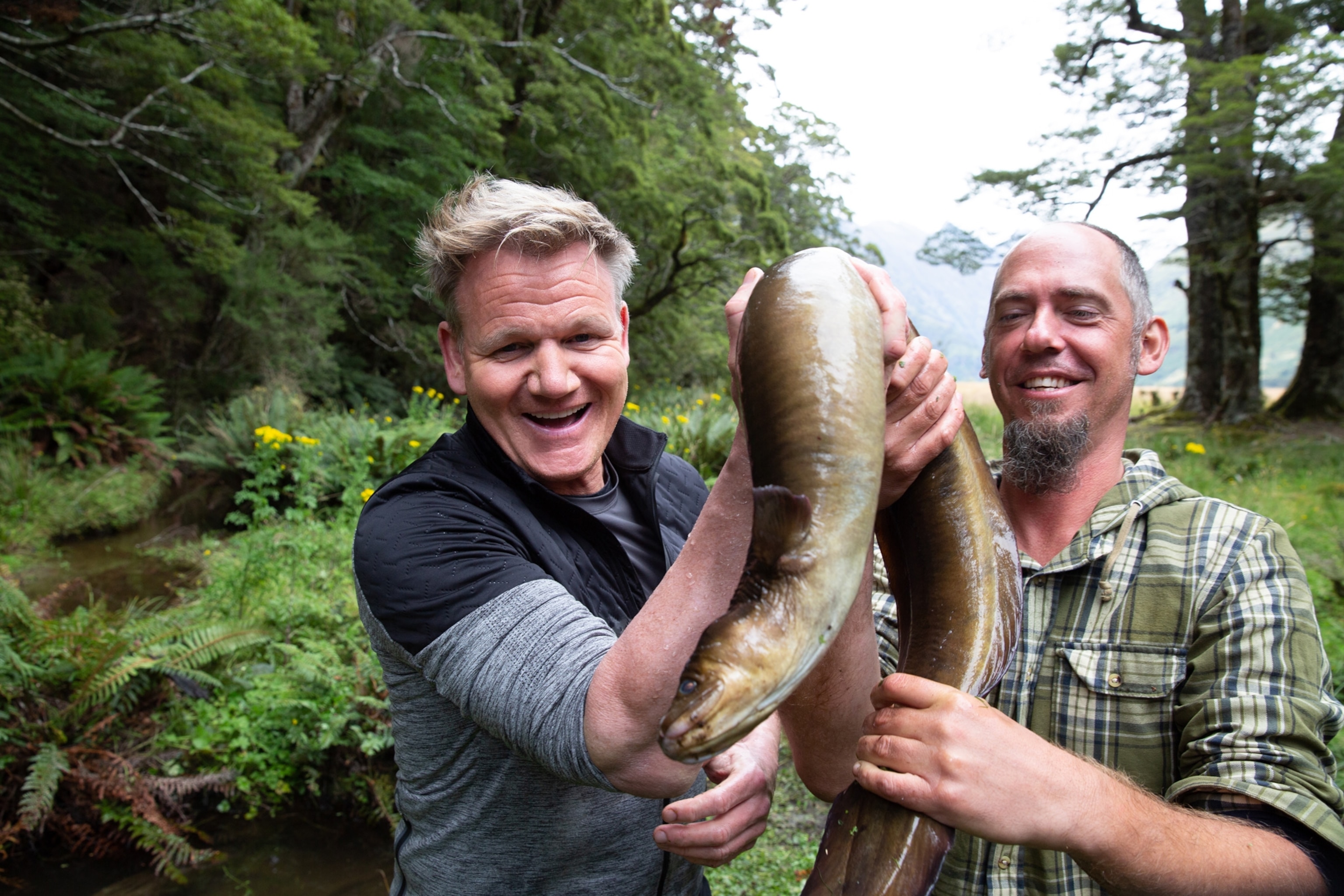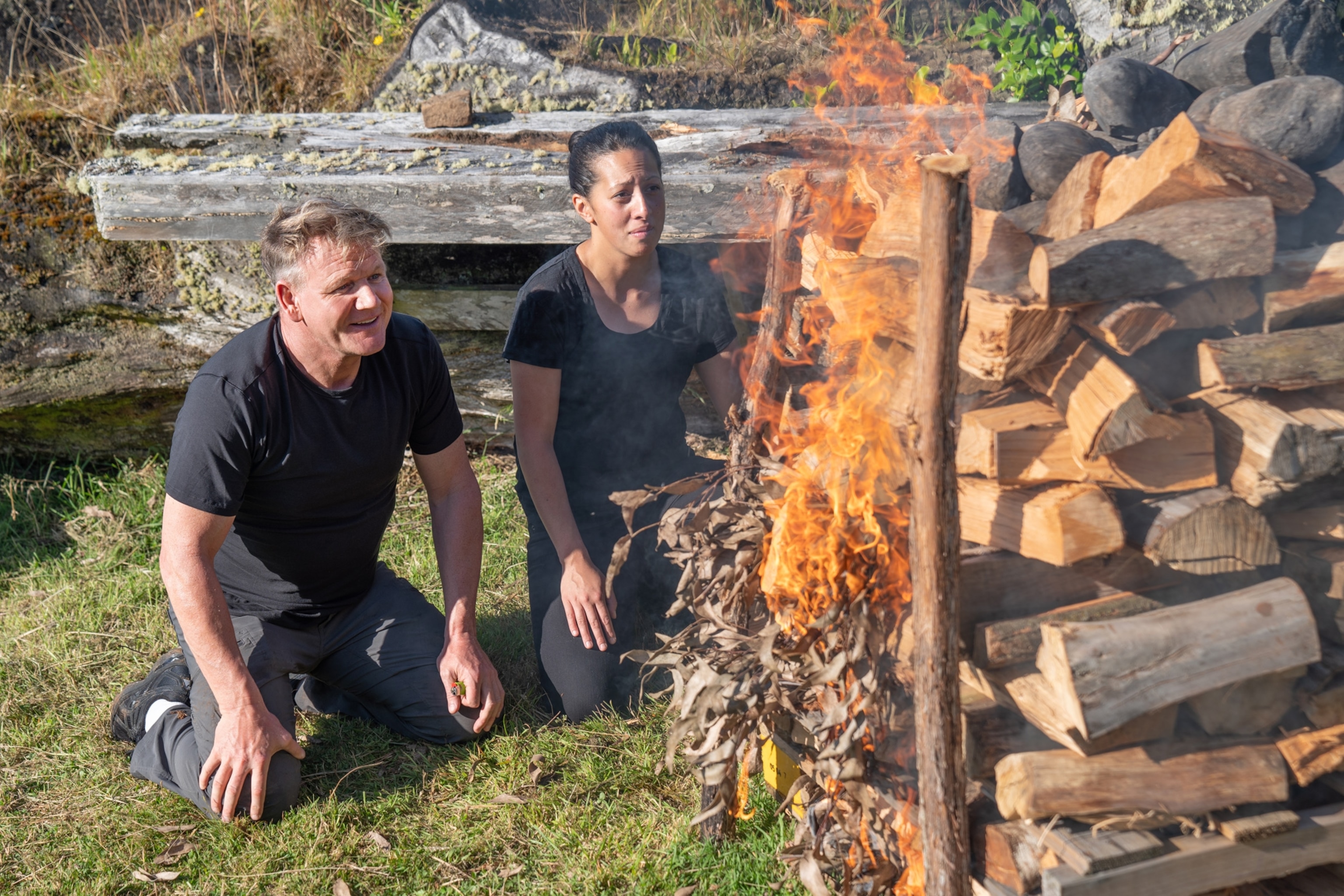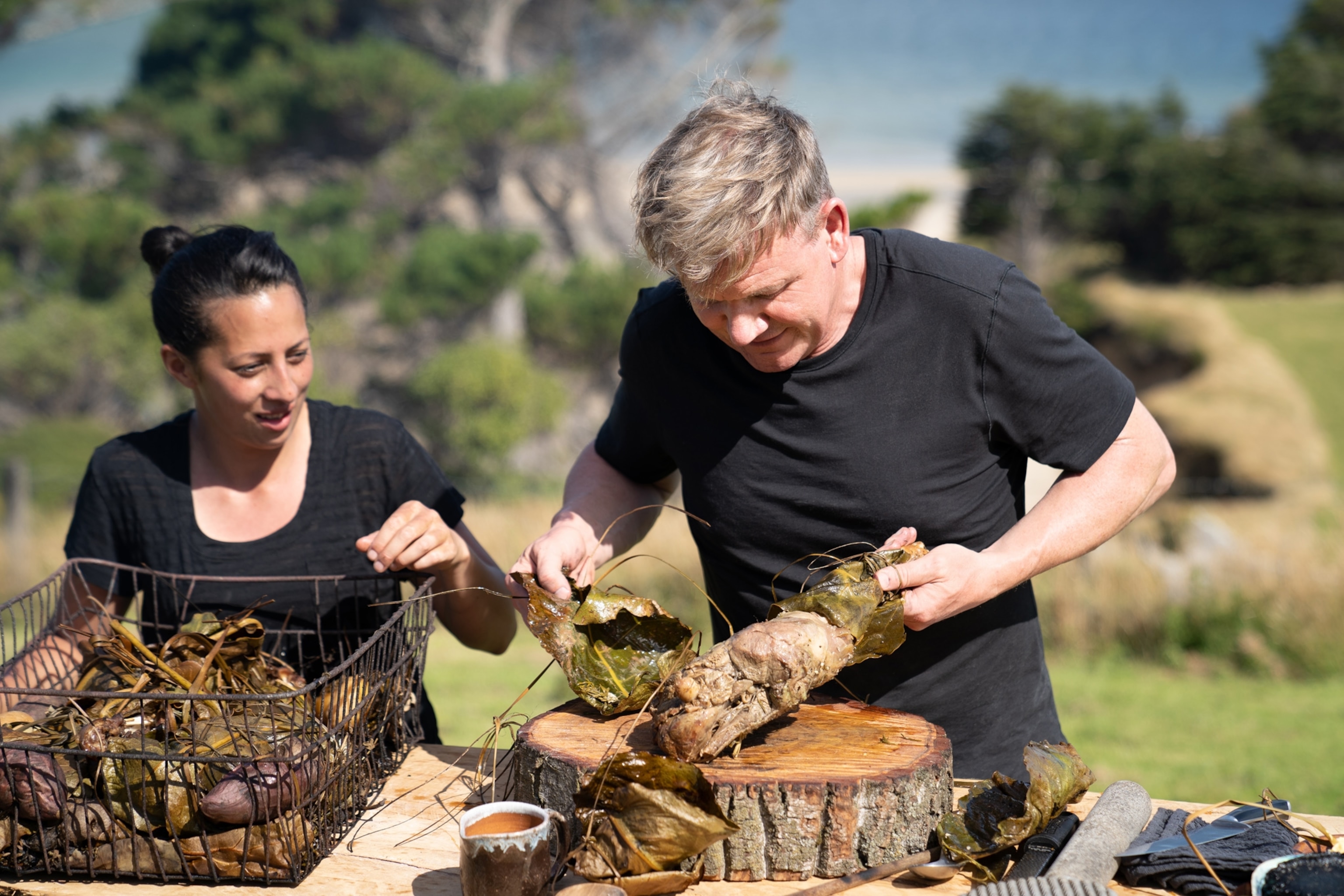Gordon Ramsay Explores New Zealand’s Rugged South
With its European, Asian, and Polynesian influences, contemporary New Zealand cuisine draws heavily upon ancient traditions of the Māori people.

Slashing his way through the lush New Zealand forest with a machete, Gordon Ramsay steps between emerald ferns and a tangled wall of vines. “This is not like a supermarket aisle,” he says, but he doesn’t have to fend for himself in determining which plants are merely hurdles and which can be harvested to add to a meal. Chef Monique Fiso leads the way and points out edible wild plants, including peppery horopito, asparagus-tasting pirita (supplejack) and sweet purple fuchsia berries.
It may be the adventure capital of the world, but New Zealand flies under the radar in the culinary universe. With European, Asian, and Polynesian influences, contemporary New Zealand cuisine also draws heavily on Māori food. In traditional life, Māori peoples were hunters and gatherers who harvested their food from the mountains, forests, rivers, and ocean. Fiso, with her restaurant Hiakai, aims to shine a light on Māori cuisine, proving that there’s a modern home for it in the world of fine dining.
From the traditional hāngi (earth oven) to foraging for ingredients harvested from the land and water, the indigenous Māori people possess a tradition of food that is uniquely their own and boasts flavors found nowhere else in the world.
“Foraging is big on the menu,” says Fiso, and indeed the foraging tradition stretches back into history, to the earliest Polynesian settlers, and connects them to the natural environment. New Zealand has a lot of old, dense native bush, and its ferns, vines, palms, fungi, berries, fruit, and seeds became important foods. Much of the forest has been around for hundreds of years, since the time of Māori ancestors and was used by those ancestors for food and medicine—so it’s sacred to today's Māori people.
- National Geographic Expeditions
Medical practitioners passed their knowledge down through the generations, and modern Māori healers still use the concepts and practices they learned from their predecessors. Thoughtful foraging practice, whether for kai (food) or Rongoā Māori (herbal medicine), is to prioritize great respect for the forest, for the Māori people, the bush and the native plants are also ancestors. From pikopiko fern tips to wood ear fungus to heart-shaped kawakawa leaves, they’re all generous resources from Papatūānuku—the Mother Earth figure in Māori tradition.

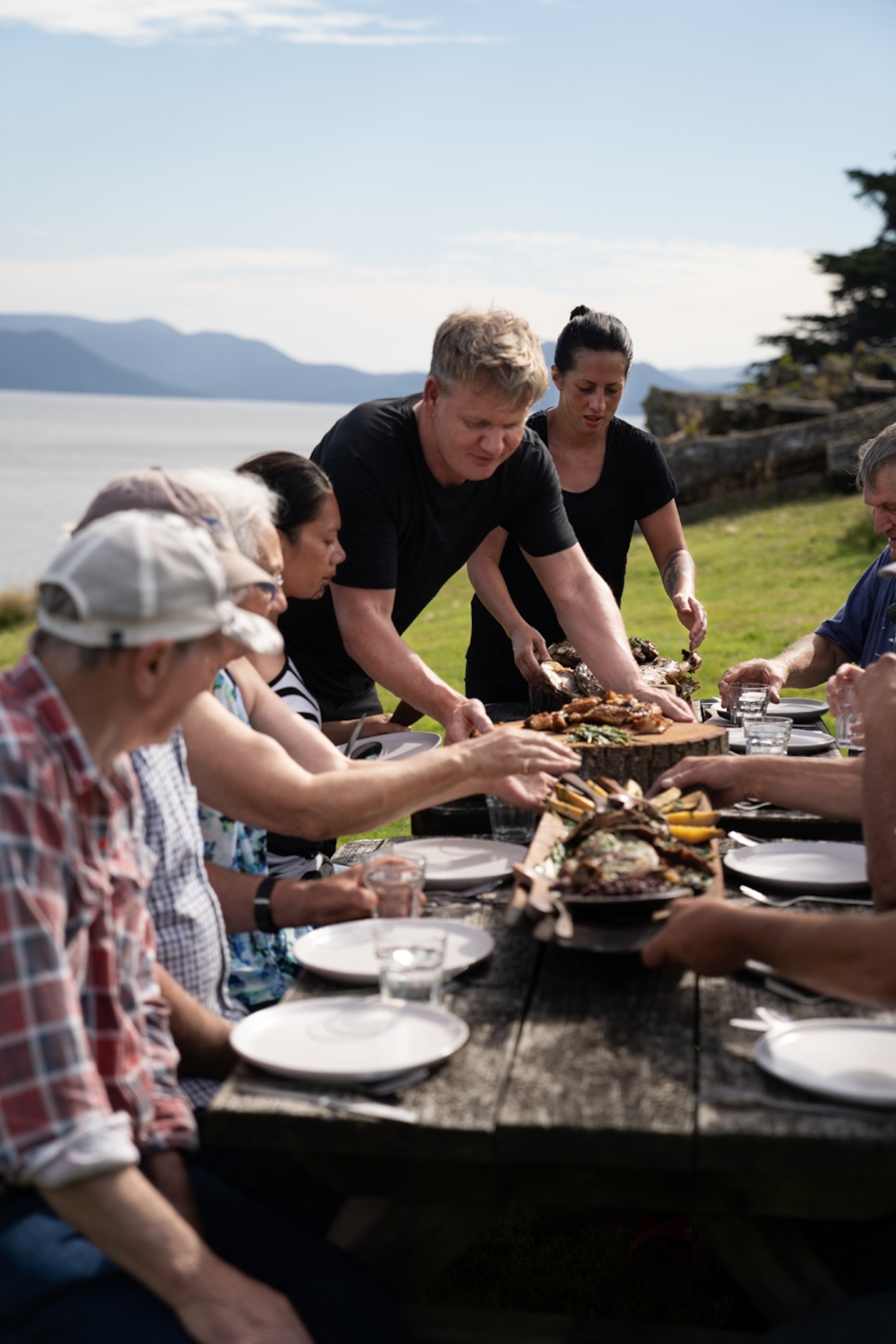
“You didn’t tell me at the beginning of the week we’d be digging a hole and cooking in a pit,” says Ramsay, when Fiso informs him that some of their dishes for the Big Cook will be cooked in a hangi. Into the earthen oven goes goat meat rubbed with spicy horopito leaves foraged from the forest, and wrapped in puka leaves instead of foil. “I can’t touch anything,” says Ramsay. “I can’t double check for that level of perfection, because that’s it—it’s in there now.” It may not be the easiest practice for a chef who’s used to checking the oven, but the hangi is an integral part of Māori culture and part of what Ramsay wants to highlight on Uncharted.
